theory on Toyota strategy...
#16
Good read and I'm pretty much aligned.
The fact the fact Toyota is being very conservative in the BEV market, for example, supports your theory. Problem for Toyota is the BEV market is exploding for which car manufacturers will capitalize $ on over the next few years including being first-to-market which has additional value down the road. Toyota took big risks 20-30 years ago (hybrid tech + Lexus brand to name a few) and surely it paid off, but the complacency they are in recently is not comforting and a big risk IMO. Even the expansion of hydrogen-fuel-cell seems to have taken a pause (i.e. where's the LS FC and FC infrastructure), though I think that's a missed opportunity that Toyota needed to go "all-in" 5 years ago to now be competitive against BEVs and its ever-expanding supporting infrastructure.
The fact the fact Toyota is being very conservative in the BEV market, for example, supports your theory. Problem for Toyota is the BEV market is exploding for which car manufacturers will capitalize $ on over the next few years including being first-to-market which has additional value down the road. Toyota took big risks 20-30 years ago (hybrid tech + Lexus brand to name a few) and surely it paid off, but the complacency they are in recently is not comforting and a big risk IMO. Even the expansion of hydrogen-fuel-cell seems to have taken a pause (i.e. where's the LS FC and FC infrastructure), though I think that's a missed opportunity that Toyota needed to go "all-in" 5 years ago to now be competitive against BEVs and its ever-expanding supporting infrastructure.
#17
Thread Starter
Lexus Fanatic
iTrader: (20)
Joined: Feb 2001
Posts: 75,631
Likes: 2,588
From: Present
Today, Toyota is a full line manufacturer. Very hard to grow sales when you are already selling 2 million US plus per year. Add in a US car industry that is experiencing declining sales (and will never go back up).
 and with a potential market of self-driving taxis there could be MORE vehicles on the road than ever before, fleets of them, a big chunk at any time recharging themselves, but private ownership would be very limited. that's the future i see fwiw.
and with a potential market of self-driving taxis there could be MORE vehicles on the road than ever before, fleets of them, a big chunk at any time recharging themselves, but private ownership would be very limited. that's the future i see fwiw.
Who cares? It is selling well. People seem to like. Has the highest resale value. Made in Japan. In Tahara. 1 in 5 get a road test for quality at the factory....... Its a Toy for those love the Toyota brand
Was not a cheap shot. Just wanted to point out while you rag on the LS500 engine,
what car the G90 or the LS has the newer engine? What car has the worlds first 10-speed transmission? I do agree the LS500h should be a better set up.
What about their new engines and the high efficiency designs? Safety items standard across almost the entire line up of models? Bringing more production to US or Canadian manufacturing plants? NX in Ontario, ES in Kentucky. Building the Texas plant etc. A brand new Mississippi plant?

What about their Mirai hydrogen model?
3 year old article, but establishing loads of patents is a good strategy for long term revenue that many huge companies engage in. ibm gets tons of patents all the time and uses them for licensing revenue. but with all those patents in 'green' energy, it doesn't seem to have slowed tesla or anyone else any! i also dislike the 'patents as a weapon' strategy because it just ties the courts up in knots and enriches tons of lawyers while slowing innovation.
if anything your points have bolstered my theory that toyota has made moves to protect its value and grow its profitability and cash hoard through lowering costs and getting 'free money' through patent licensing. all signs of a huge company trying to protect itself in an uncertain future while stockpiling cash to be prepared for disruption and seize opportunities. in other words, don't expect anything very exciting or innovative from toyota any time soon.
#18
'never' is a long time.  and with a potential market of self-driving taxis there could be MORE vehicles on the road than ever before, fleets of them, a big chunk at any time recharging themselves, but private ownership would be very limited. that's the future i see fwiw..
and with a potential market of self-driving taxis there could be MORE vehicles on the road than ever before, fleets of them, a big chunk at any time recharging themselves, but private ownership would be very limited. that's the future i see fwiw..
 and with a potential market of self-driving taxis there could be MORE vehicles on the road than ever before, fleets of them, a big chunk at any time recharging themselves, but private ownership would be very limited. that's the future i see fwiw..
and with a potential market of self-driving taxis there could be MORE vehicles on the road than ever before, fleets of them, a big chunk at any time recharging themselves, but private ownership would be very limited. that's the future i see fwiw..current 4Runner sales really isn't relevant to this discussion so moving on...
not sure where you got that from. i think the Lexus TTV6 is awesome! now the LS hybrid drivetrain has received poor reviews, but i haven't driven one (or any new LS) so i don't really know.
again that isn't relevant to the topic, so moving on...
.
not sure where you got that from. i think the Lexus TTV6 is awesome! now the LS hybrid drivetrain has received poor reviews, but i haven't driven one (or any new LS) so i don't really know.
again that isn't relevant to the topic, so moving on...
.
3 year old article, but establishing loads of patents is a good strategy for long term revenue that many huge companies engage in. ibm gets tons of patents all the time and uses them for licensing revenue. but with all those patents in 'green' energy, it doesn't seem to have slowed tesla or anyone else any! i also dislike the 'patents as a weapon' strategy because it just ties the courts up in knots and enriches tons of lawyers while slowing innovation.
.
.
if anything your points have bolstered my theory that toyota has made moves to protect its value and grow its profitability and cash hoard through lowering costs and getting 'free money' through patent licensing. all signs of a huge company trying to protect itself in an uncertain future while stockpiling cash to be prepared for disruption and seize opportunities. in other words, don't expect anything very exciting or innovative from toyota any time soon.
Last edited by Toys4RJill; 06-22-19 at 12:09 PM.
#19
#20
well 'worth' would be market cap which doesn't necessarily help toyota as their stock is publicly traded unless they want to issue more stock, but cash on hand is interesting and it's been increasing in recent years which supports my theory.
Toyota Annual Cash on Hand
(Millions of US $)
2018$51,497
2017$54,864
2016$45,508
2015$47,465
2014$42,683
2013$34,776
2012$35,778
2011$42,214
2010$43,547
2009$30,386
2008$23,012
2007$20,013
2006$19,193
2005$19,466
source: https://www.macrotrends.net/stocks/c...a/cash-on-hand
Toyota Annual Cash on Hand
(Millions of US $)
2018$51,497
2017$54,864
2016$45,508
2015$47,465
2014$42,683
2013$34,776
2012$35,778
2011$42,214
2010$43,547
2009$30,386
2008$23,012
2007$20,013
2006$19,193
2005$19,466
source: https://www.macrotrends.net/stocks/c...a/cash-on-hand
#21
#22
You are too right bitkahuna.
It's all about $$$.
TMC's equity [which is assets less liabilities] is $186 billion dollars, while Daimler AG is less than half at only $75 billion dollars.
I noticed several years ago that Lexus was producing limited body styles in IS/GS/LS sedans, while the Germans would have both 3/5/7 sedans, and 4/6/8 4 Door Gran Coupes.
Lexus only had FWD-based UX/NX/RX tall wagons, while the Germans had both X3/X5/X7 tall wagons plus X4/X6/[X8] 4 Door Gran Coupe tall wagons too.
Lexus was also very conservative with engines, in particular, little in the way of small capacity turbos, apart from their 2.0T and now 3.5TT.
Then I realized that we were at cross roads.
Just like digital cameras, electrification was just around the corner.
TMC believes that the current crop of lithium ion batteries is NOT the answer.
Range is limited, and recharging takes too long; high speed recharging only causes rapid long term ageing of the battery pack - costs are also very high.
TMC believes that solid state batteries is the answer, but there is no major breakthrough in solid state batteries.
Hence, we are at the cross roads, so that TMC is not interested in pouring $$$ into small capacity turbos, nor 48 V electric turbos which can spool to 70,000 rpm in just 250 milliseconds to almost totally eliminate turbo lag - as used in F1 racing.
So many conventional turbo fans mistakenly believe that their conventional turbos perform exactly like a 48 V electric turbo!
One has lag and a peaky torque curve, while the other does not.
TMC has invested in hybrids 20 years ago, so TMC is heavily focused on hybrids for now.
Even when solid state batteries do eventuate, range and in particular recharging times will still be capped - hence hydrogen fuel cell electric vehicles like the Mirai.
Hydrogen fuel cell is less efficient than EV overall, but hydrogen is quick to refill, and has long range.
HFCEV may well replace diesels used in commercial vehicles?
With all the different types of drive trains like ICEV, hybrid, EV, and HFCEV - TMC needs a "modular" architecture platform that can employ all these different types of drive lines in the one chassis.
Tall wagon body styles are booming.
Sedans diminishing.
While coupes have minuscule sales.
Hence great to reskin Subaru BRZ as Toyota GT86, and BMW Z4 as Toyota Supra; likewise a Mazda RWD to replace the ageing Toyota Mark X sold in small numbers in the Japanese Domestic Market JDM.
President Akio did make his vehicles with sporty firm suspension and less sound insulation, however with latest Camry, ES and Corolla, I believe he has reneged on that, because the latest Camry and Corolla are now both smoother and quieter than ever!
Lately, Pres Akio has lowered the rooflines of the 5LS, Camry, ES and Corolla which all have smaller cabins now, but I suspect he will renege on that too - especially since the electric battery pack is 4" high, so EV's will raise the roofline by 4" just like the Chevrolet Bolt and Nissan Leaf etc.
I believe TMC's angular styling is selling well, and here to stay!
As for 5LS, I suspect it will be the very last of the sports - firmly suspensioned, noisy tired, and limited sound insulation cars.
5LS was the first and I suspect will be the last of the low roof line sedans with cramped headroom.
IMO, everybody has their bad days, and 5LS is just one-off poorly styled; all the other Lexiis like NX, RX, UX, and even ES look nice; a total reskin at the mid-life refresh like the 2015 Camry is possible.
I don't believe TMC will invest too much money into a low volume selling V8 TT - just my educated guess...
.
It's all about $$$.
TMC's equity [which is assets less liabilities] is $186 billion dollars, while Daimler AG is less than half at only $75 billion dollars.
I noticed several years ago that Lexus was producing limited body styles in IS/GS/LS sedans, while the Germans would have both 3/5/7 sedans, and 4/6/8 4 Door Gran Coupes.
Lexus only had FWD-based UX/NX/RX tall wagons, while the Germans had both X3/X5/X7 tall wagons plus X4/X6/[X8] 4 Door Gran Coupe tall wagons too.
Lexus was also very conservative with engines, in particular, little in the way of small capacity turbos, apart from their 2.0T and now 3.5TT.
Then I realized that we were at cross roads.
Just like digital cameras, electrification was just around the corner.
TMC believes that the current crop of lithium ion batteries is NOT the answer.
Range is limited, and recharging takes too long; high speed recharging only causes rapid long term ageing of the battery pack - costs are also very high.
TMC believes that solid state batteries is the answer, but there is no major breakthrough in solid state batteries.
Hence, we are at the cross roads, so that TMC is not interested in pouring $$$ into small capacity turbos, nor 48 V electric turbos which can spool to 70,000 rpm in just 250 milliseconds to almost totally eliminate turbo lag - as used in F1 racing.
So many conventional turbo fans mistakenly believe that their conventional turbos perform exactly like a 48 V electric turbo!
One has lag and a peaky torque curve, while the other does not.
TMC has invested in hybrids 20 years ago, so TMC is heavily focused on hybrids for now.
Even when solid state batteries do eventuate, range and in particular recharging times will still be capped - hence hydrogen fuel cell electric vehicles like the Mirai.
Hydrogen fuel cell is less efficient than EV overall, but hydrogen is quick to refill, and has long range.
HFCEV may well replace diesels used in commercial vehicles?
With all the different types of drive trains like ICEV, hybrid, EV, and HFCEV - TMC needs a "modular" architecture platform that can employ all these different types of drive lines in the one chassis.
Tall wagon body styles are booming.
Sedans diminishing.
While coupes have minuscule sales.
Hence great to reskin Subaru BRZ as Toyota GT86, and BMW Z4 as Toyota Supra; likewise a Mazda RWD to replace the ageing Toyota Mark X sold in small numbers in the Japanese Domestic Market JDM.
President Akio did make his vehicles with sporty firm suspension and less sound insulation, however with latest Camry, ES and Corolla, I believe he has reneged on that, because the latest Camry and Corolla are now both smoother and quieter than ever!
Lately, Pres Akio has lowered the rooflines of the 5LS, Camry, ES and Corolla which all have smaller cabins now, but I suspect he will renege on that too - especially since the electric battery pack is 4" high, so EV's will raise the roofline by 4" just like the Chevrolet Bolt and Nissan Leaf etc.
I believe TMC's angular styling is selling well, and here to stay!
As for 5LS, I suspect it will be the very last of the sports - firmly suspensioned, noisy tired, and limited sound insulation cars.
5LS was the first and I suspect will be the last of the low roof line sedans with cramped headroom.
IMO, everybody has their bad days, and 5LS is just one-off poorly styled; all the other Lexiis like NX, RX, UX, and even ES look nice; a total reskin at the mid-life refresh like the 2015 Camry is possible.
I don't believe TMC will invest too much money into a low volume selling V8 TT - just my educated guess...
.
Last edited by peteharvey; 06-25-19 at 03:53 PM. Reason: Removed personal comment. Not needed please
#24
I noticed several years ago that Lexus was producing limited body styles in IS/GS/LS sedans, while the Germans would have both 3/5/7 sedans, and 4/6/8 4 Door Gran Coupes.
Lexus only had FWD-based UX/NX/RX tall wagons, while the Germans had both X3/X5/X7 tall wagons plus X4/X6/[X8] 4 Door Gran Coupe tall wagons too.
Lexus was also very conservative with engines, in particular, little in the way of small capacity turbos, apart from their 2.0T and now 3.5TT.
Lexus only had FWD-based UX/NX/RX tall wagons, while the Germans had both X3/X5/X7 tall wagons plus X4/X6/[X8] 4 Door Gran Coupe tall wagons too.
Lexus was also very conservative with engines, in particular, little in the way of small capacity turbos, apart from their 2.0T and now 3.5TT.
So what? Can’t Lexus have a different philosophy regarding its model lineup and engine choice from the Germans?
Toyota is aiming to introduce its new solid-state battery next summer, at the time of the 2020 Summer Olympics.
Toyota is ramping up electric vehicle deployment plans, pulling forward its goal of selling 5.5 million electrified vehicles by five years and aiming to develop a solid-state battery by next summer as it races to meet a "sudden surge" of EV popularization.
Hence, we are at the cross roads, so that TMC is not interested in pouring $$$ into small capacity turbos, nor 48 V electric turbos which can spool to 70,000 rpm in just 2 milliseconds to totally eliminate turbo lag - as used in F1 racing.
So many conventional turbo fans mistakenly believe that their conventional turbos perform exactly like a 48 V electric turbo!
One has lag and a peaky torque curve, while the other does not.
So many conventional turbo fans mistakenly believe that their conventional turbos perform exactly like a 48 V electric turbo!
One has lag and a peaky torque curve, while the other does not.
If so, how do you explain the following description of a Toyota patent?
May 03, 2017 Toyota is working on a forced induction system that has an electric supercharger and a turbocharger.
We know Toyota has been developing electric superchargers from a previous patent application for a special bearing design, but AutoGuide.com has discovered a patent detailing a supercharging system that is applied to an internal combustion engine. The system includes a turbocharger powered by the engine’s exhaust gasses while the supercharger is powered by electricity. The goal would be a two-stage system where the electric supercharger would provide performance while the turbo spools up, helping eliminate what is called “turbo lag.”
We know Toyota has been developing electric superchargers from a previous patent application for a special bearing design, but AutoGuide.com has discovered a patent detailing a supercharging system that is applied to an internal combustion engine. The system includes a turbocharger powered by the engine’s exhaust gasses while the supercharger is powered by electricity. The goal would be a two-stage system where the electric supercharger would provide performance while the turbo spools up, helping eliminate what is called “turbo lag.”
With all the different types of drive trains like ICEV, hybrid, EV, and HFCEV - TMC needs a "modular" architecture platform that can employ all these different types of drive lines in the one chassis.
That would be the (e-)TNGA platform.
It is dubbed e-TNGA, a play on the company's new-generation Toyota New Global Architecture modular platform that the automaker has been rolling out in recent years. The EV version is an outgrowth of EV C.A. Spirit Corp., a nine-company consortium led by Toyota to develop and share components for electric vehicles. Other members include Subaru, Mazda, Suzuki and Daihatsu.
Earlier in the week, Toyota said had agreed with Subaru to jointly develop an all-electric platform for midsize and large vehicles and jointly develop an electric crossover.
That vehicle, which will be sold separately under each brand, will debut in the early 2020s with the U.S. as a main target market, a Toyota spokesman said.
Earlier in the week, Toyota said had agreed with Subaru to jointly develop an all-electric platform for midsize and large vehicles and jointly develop an electric crossover.
That vehicle, which will be sold separately under each brand, will debut in the early 2020s with the U.S. as a main target market, a Toyota spokesman said.
If the platform is to debut in “the early 2020s” (i.e. a year or so away), it is just about (90%+) ready.
Apr 16th 2019 Toyota has officially unveiled its C-HR-based electric crossovers for the Chinese market. The GAC Toyota-built electric C-HR and the FAW counterpart, IZOA, appeared at the Shanghai Auto Show today. The models are the first fully electric Toyotas for China, and sales begin next year.
No figures have been released for the electric twins, nothing about the attainable range, available power or performance, but more information is sure to be made available later. The C-HR rides on the same TNGA platform as the new Corolla, so the BEV-ization of the Corolla is surely just a matter of time, and it's not unreasonable to expect a global fully electric variant of both the Corolla and C-HR in the near future if the Chinese endeavor is anything to go by.
No figures have been released for the electric twins, nothing about the attainable range, available power or performance, but more information is sure to be made available later. The C-HR rides on the same TNGA platform as the new Corolla, so the BEV-ization of the Corolla is surely just a matter of time, and it's not unreasonable to expect a global fully electric variant of both the Corolla and C-HR in the near future if the Chinese endeavor is anything to go by.
Lately, Pres Akio has lowered the rooflines of the 5LS, Camry, ES and Corolla which all have smaller cabins now, but I suspect he will renege on that too - especially since the electric battery pack is 4" high, so EV's will raise the roofline by 4" just like the Chevrolet Bolt and Nissan Leaf etc.
The difference in height between the 4th-generation LS and the 5th-generation LS is less than 0.5-inch (1,466 (57.7 in) compared to 1,461 mm (57.5 in)), hardly anything significant.
I believe TMC's angular styling is selling well, and here to stay! Just ask spwolf - he loves Toyota Motor Corp products.
As for 5LS, I suspect it will be the very last of the sports - firmly suspensioned, noisy tired, and limited sound insulation cars.
5LS was the first and I suspect will be the last of the low roof line sedans with cramped headroom.
IMO, everybody has their bad days, and 5LS is just one-off poorly styled; all the other Lexiis like NX, RX, UX, and even ES look nice; a total reskin at the mid-life refresh like the 2015 Camry is possible.
As for 5LS, I suspect it will be the very last of the sports - firmly suspensioned, noisy tired, and limited sound insulation cars.
5LS was the first and I suspect will be the last of the low roof line sedans with cramped headroom.
IMO, everybody has their bad days, and 5LS is just one-off poorly styled; all the other Lexiis like NX, RX, UX, and even ES look nice; a total reskin at the mid-life refresh like the 2015 Camry is possible.
Here we go again... Must we rehash the "LS is ugly" discussion yet again?
#25
Thread Starter
Lexus Fanatic
iTrader: (20)
Joined: Feb 2001
Posts: 75,631
Likes: 2,588
From: Present
(behind vw i believe), but i THINK toyota's now concluded that being the biggest isn't as important as being as profitable as possible!

Last year, Toyota spent $10 billion on research and development. I absolutely guarantee Toyota is in the top 3 of research and development for automakers.
I do not think you are wrong.

Toyota is doing the right thing. In a time of uncertainty, smart companies with solid leadership go back to doing what they do best. In Toyota's case, there is no question that their small sedans (Corolla, Camry) and their bread and butter stuff like the RX, ES or Highlander get top priority. Toyota is also moving everything to TNGA (not sure I love the move) which is designed to help them save money and streamline their costs. Toyota USA also moved much of the operations to Texas to be close to Mexico as Toyota like other brands will eventually start producing products in Mexico, a lot of Toyota parts are starting to come from there. Very quietly, the Tacoma is built there in some configurations.
R&I? assume that's research and innovation? anyway, not sure what you mean by interpret the numbers... but they're hoarding more and more cash by greater efficiencies and as you say, sharing platforms.
#26
Thread Starter
Lexus Fanatic
iTrader: (20)
Joined: Feb 2001
Posts: 75,631
Likes: 2,588
From: Present

Then I realized that we were at cross roads.
Just like digital cameras, electrification was just around the corner.
TMC believes that the current crop of lithium ion batteries is NOT the answer.
Range is limited, and recharging takes too long; high speed recharging only causes rapid long term ageing of the battery pack - costs are also very high.
TMC believes that solid state batteries is the answer, but there is no major breakthrough in solid state batteries.
Hence, we are at the cross roads, so that TMC is not interested in pouring $$$ into small capacity turbos, nor 48 V electric turbos which can spool to 70,000 rpm in just 2 milliseconds to totally eliminate turbo lag - as used in F1 racing.
With all the different types of drive trains like ICEV, hybrid, EV, and HFCEV - TMC needs a "modular" architecture platform that can employ all these different types of drive lines in the one chassis.
i'm sure they know this and whether tnga is it i don't know but i've no doubt toyota has or will have an efficient platform strategy.
I don't believe TMC will invest too much money into a low volume selling V8 TT - just my educated guess...
#27
They are both equally important. Worthy to be discussed.
For example:
In 2007 Toyota sold 2.161 million cars while holding 13.38% market share
In 2009 Toyota sold 1.496 million cars while holding 14.34% market share
In 2018 Toyota sold 2.128 million cars while holding 12.28% market share
Now since 2010, Toyota has been stuck at 12-12.9% market share.
Now contrast all of the above to what Toyota did from 1996-2009, they grew sales and market share every single year. Eventually they doubled it from 7% in 1996, to 13.9% in 2008.
So where is Toyota going in the US market?
Meant research and development = innovation
Why are you so obsessed with Toyota's cash on hand? They do not know where the US automotive market is going. Toyota has moved into Chinese manufacturing. And they have stalled on Mexico
For example:
In 2007 Toyota sold 2.161 million cars while holding 13.38% market share
In 2009 Toyota sold 1.496 million cars while holding 14.34% market share
In 2018 Toyota sold 2.128 million cars while holding 12.28% market share
Now since 2010, Toyota has been stuck at 12-12.9% market share.
Now contrast all of the above to what Toyota did from 1996-2009, they grew sales and market share every single year. Eventually they doubled it from 7% in 1996, to 13.9% in 2008.
So where is Toyota going in the US market?
Why are you so obsessed with Toyota's cash on hand? They do not know where the US automotive market is going. Toyota has moved into Chinese manufacturing. And they have stalled on Mexico
Last edited by Toys4RJill; 06-23-19 at 12:34 PM.
#28
Sure they can have a different philosophy.
No one is saying that they can't have a different philosophy.
The OP bitkahuna and I are just giving "my theory on Toyota strategy" as the thread is entitled.
Can't we give our opinions on Toyota strategy Mr Sulu?
Toyota Motor Corp is not new to 4 Door Gran Coupes.
Forty years ago, back in the 1980's, just about every Toyota sedan would have a derivative sporting-luxury lowered hardtop derivative with heavy duty suspension.
1991-95 Corolla Sedan

Below is the same vehicle reskinned into a lower roof line frameless window Toyota Sprinter Hardtop JDM with heavy duty sports suspension.
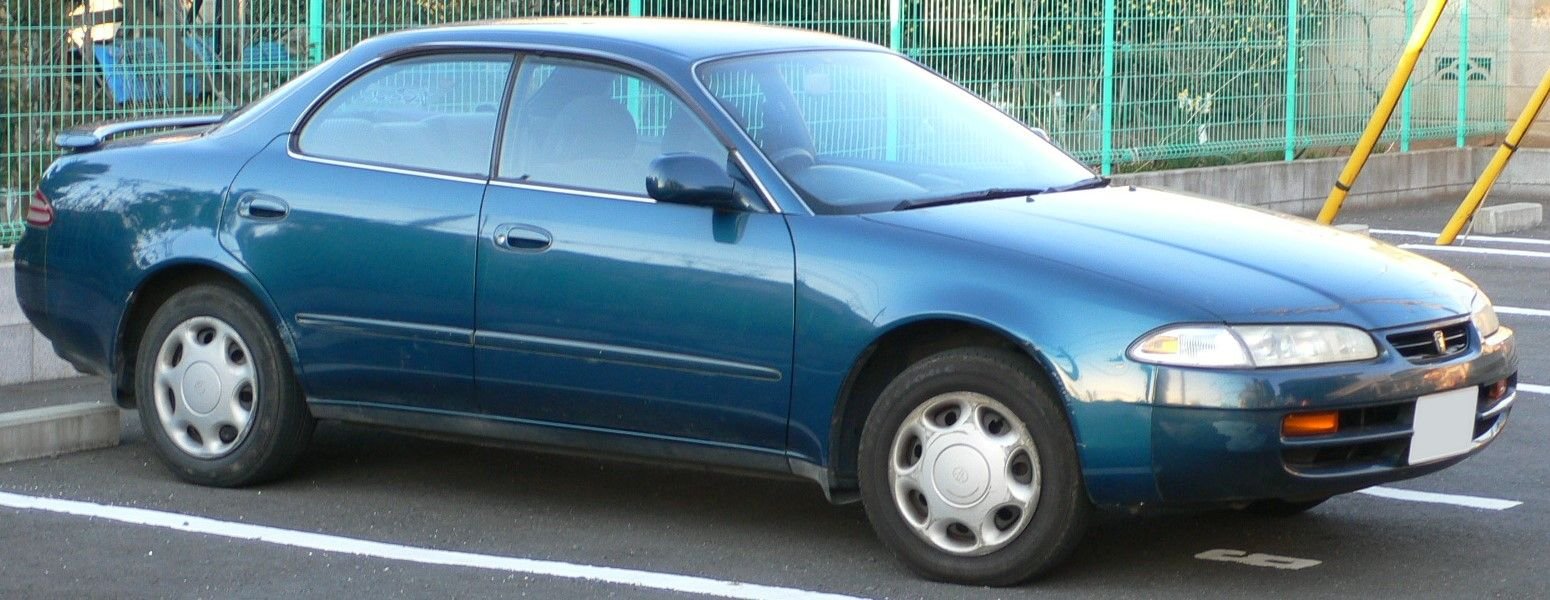
1986-90 Toyota Camry Sedan
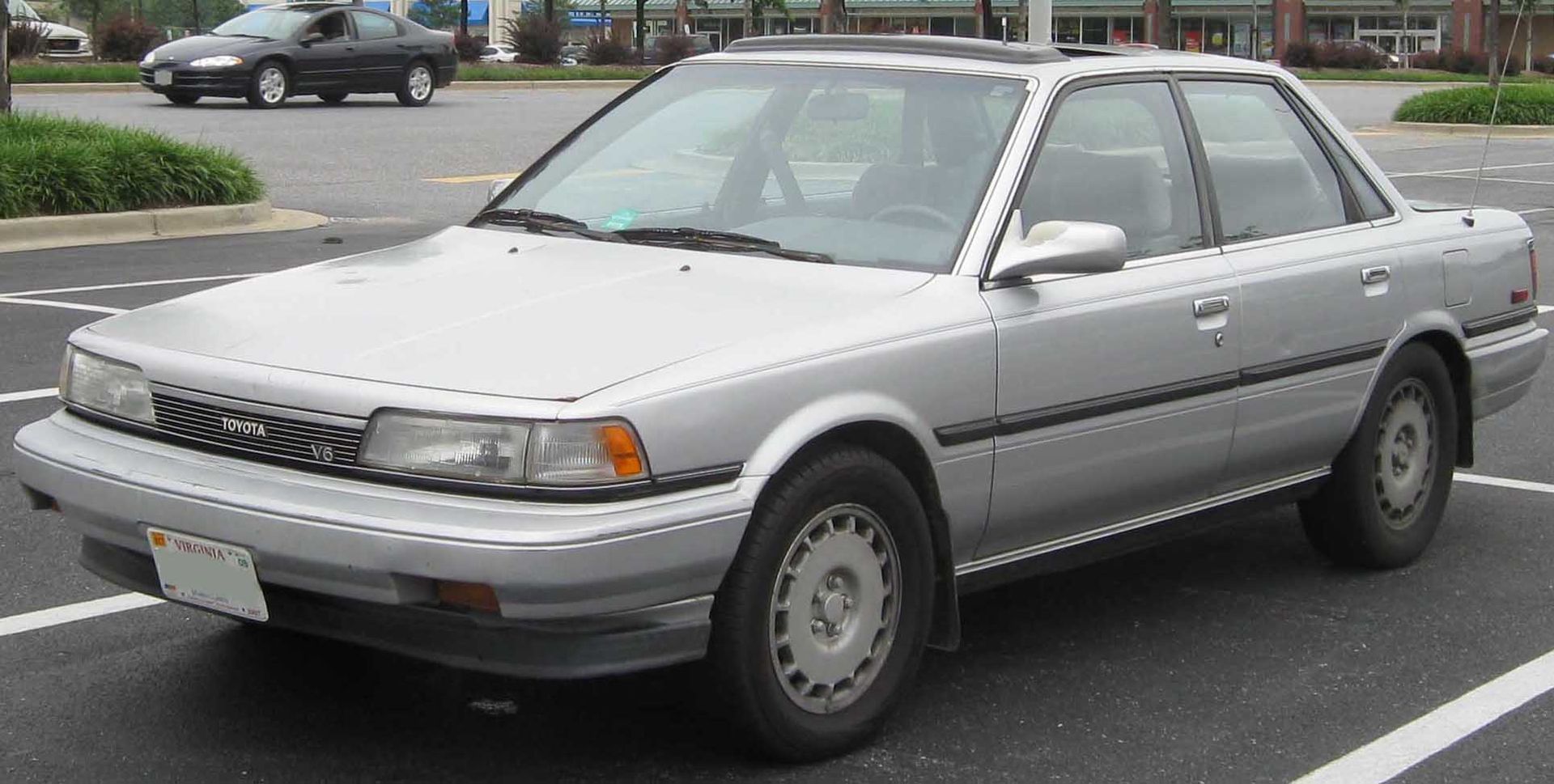
Below is the alternative reskinned vehicle with a sporty lower roofline, and sports heavy duty suspension called Camry Prominent Hardtop JDM.
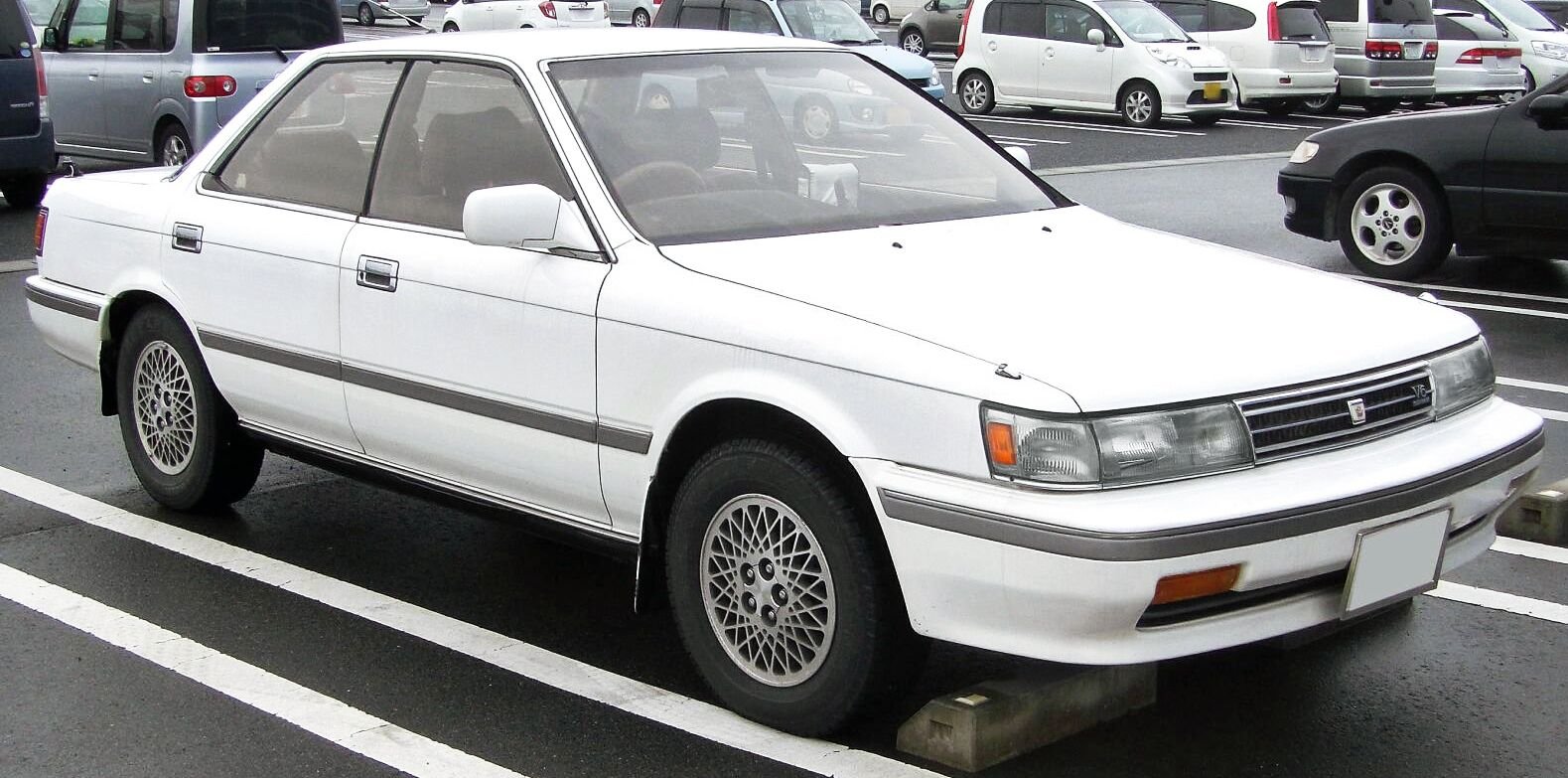
1990-94 Camry Prominent Narrow Body JDM.
The Japanese Domestic Market JDM Narrow Body version is below the Japanese Passenger Vehicle Tax limit of 4.7 m long x 1.7 m wide.
The 1992-96 Wide Body Camry is essentially a wide body version of this car with longer front and rear overhangs.

Below is essentially the same car in the sporty reskinned 15 mm lower roofline Camry Vista Narrow Body Hardtop JDM.
Notice how it even has FT 4WD, and this was back in the early 19990's.
The 1992-96 Lexus 2ES300 is essentially a wide body version of this Toyota Camry Vista Narrow Body Hardtop.
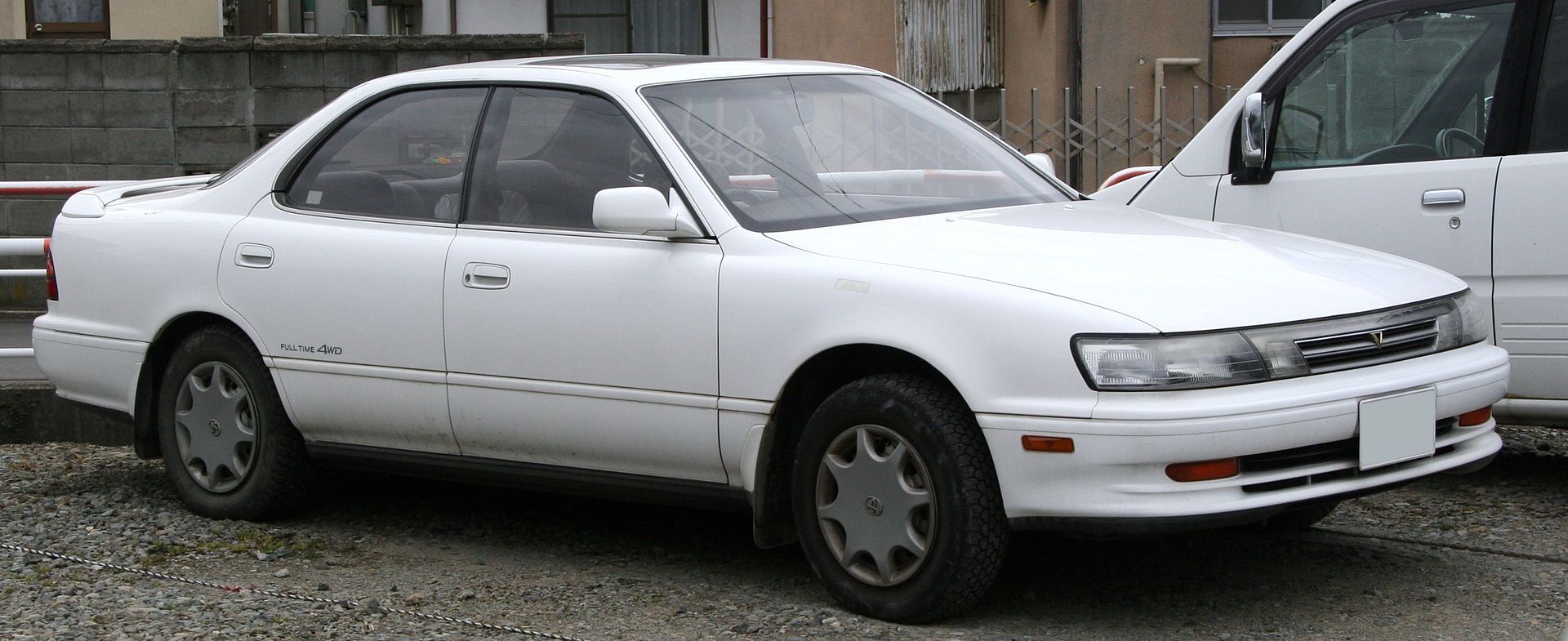
1994-98 Camry Narrow Body JDM.
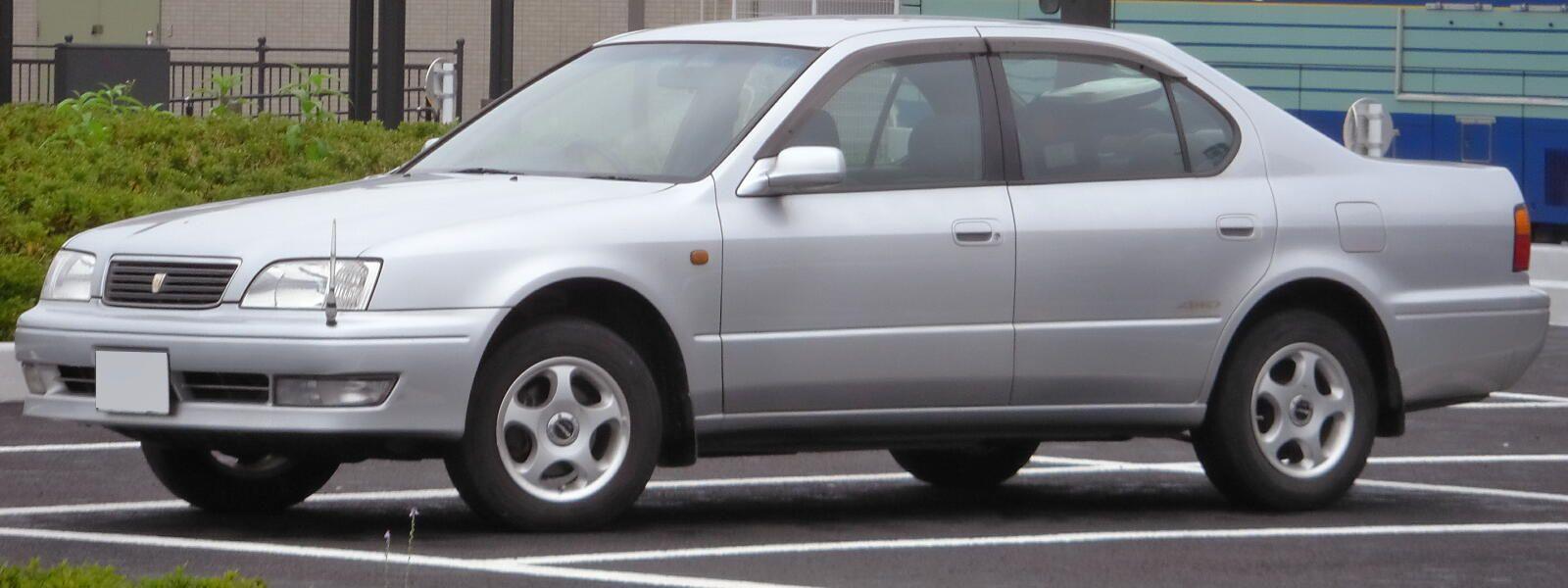
The same vehicle reskinned into a 25 mm lower roofline sporty Toyota Vista Hardtop Narrow Body JDM.
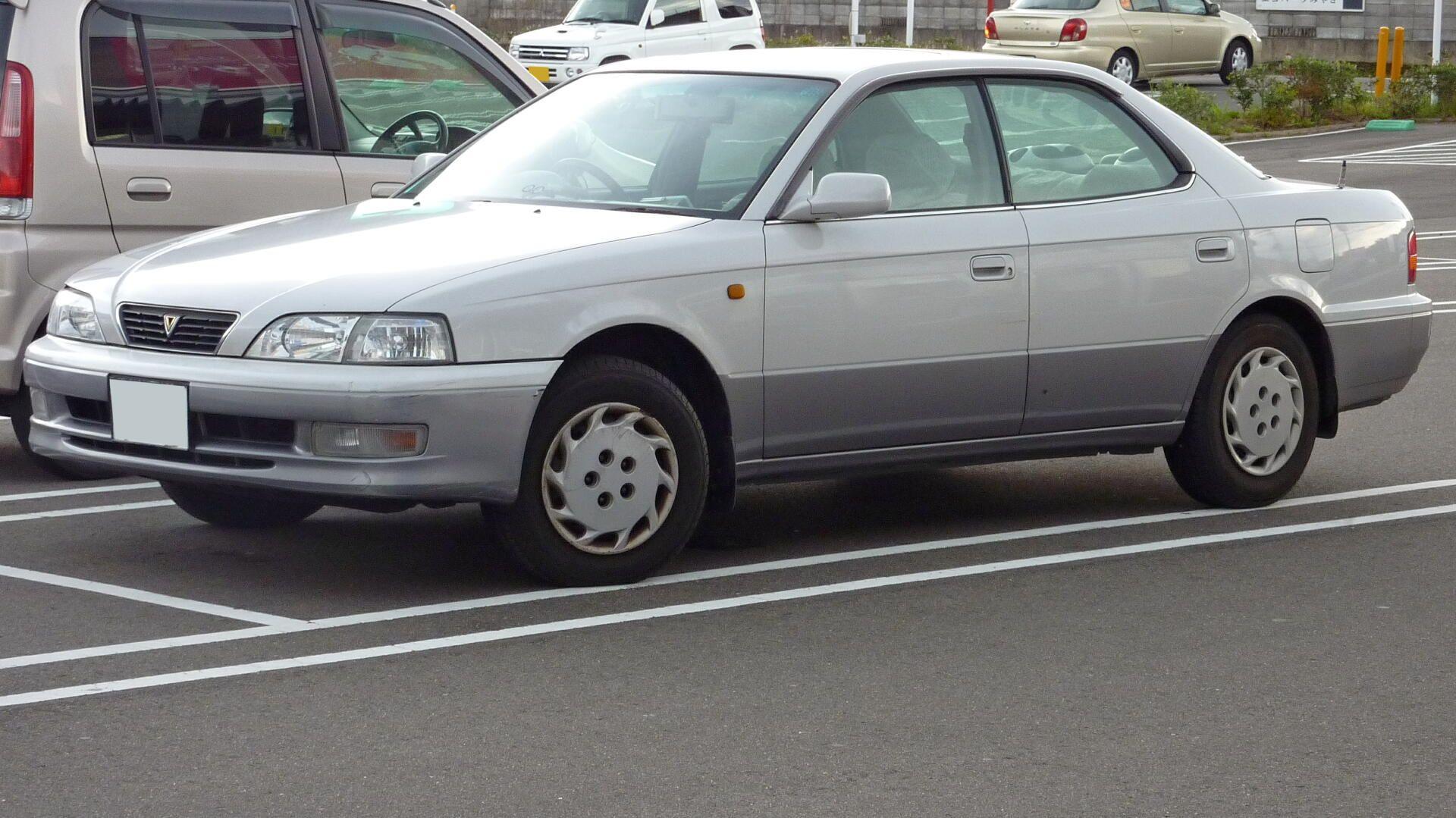
1996-00 Toyota Camry Wide Body version of the Narrow Body Camry above.
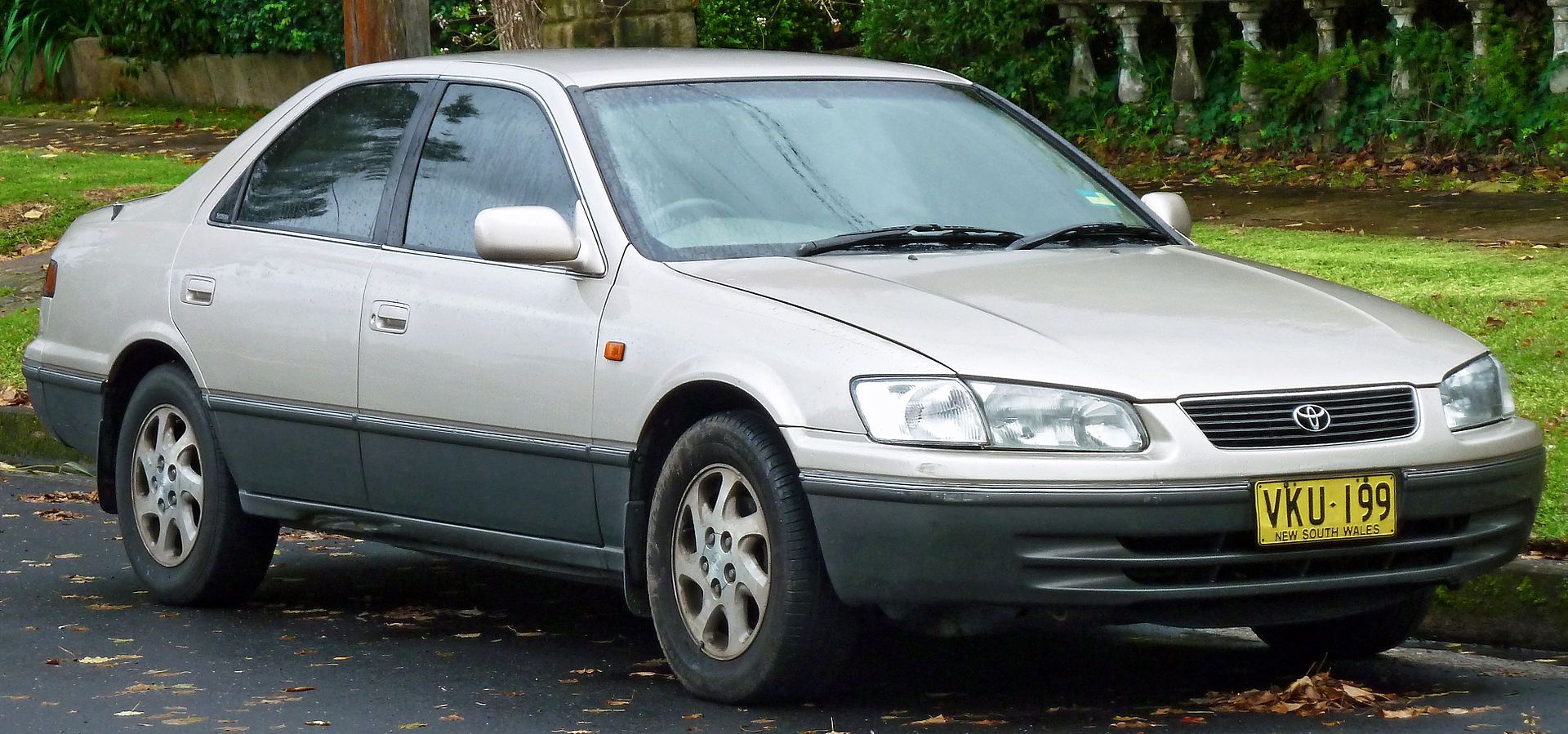
The same wide body car in reskinned sporty 36 mm lower roofline framelesss window hardtop version with heavy duty suspension in the Toyota Windom Hardtop JDM.
This is essentially a wide body version of the 1994-98 Camry Vista Hardtop above.
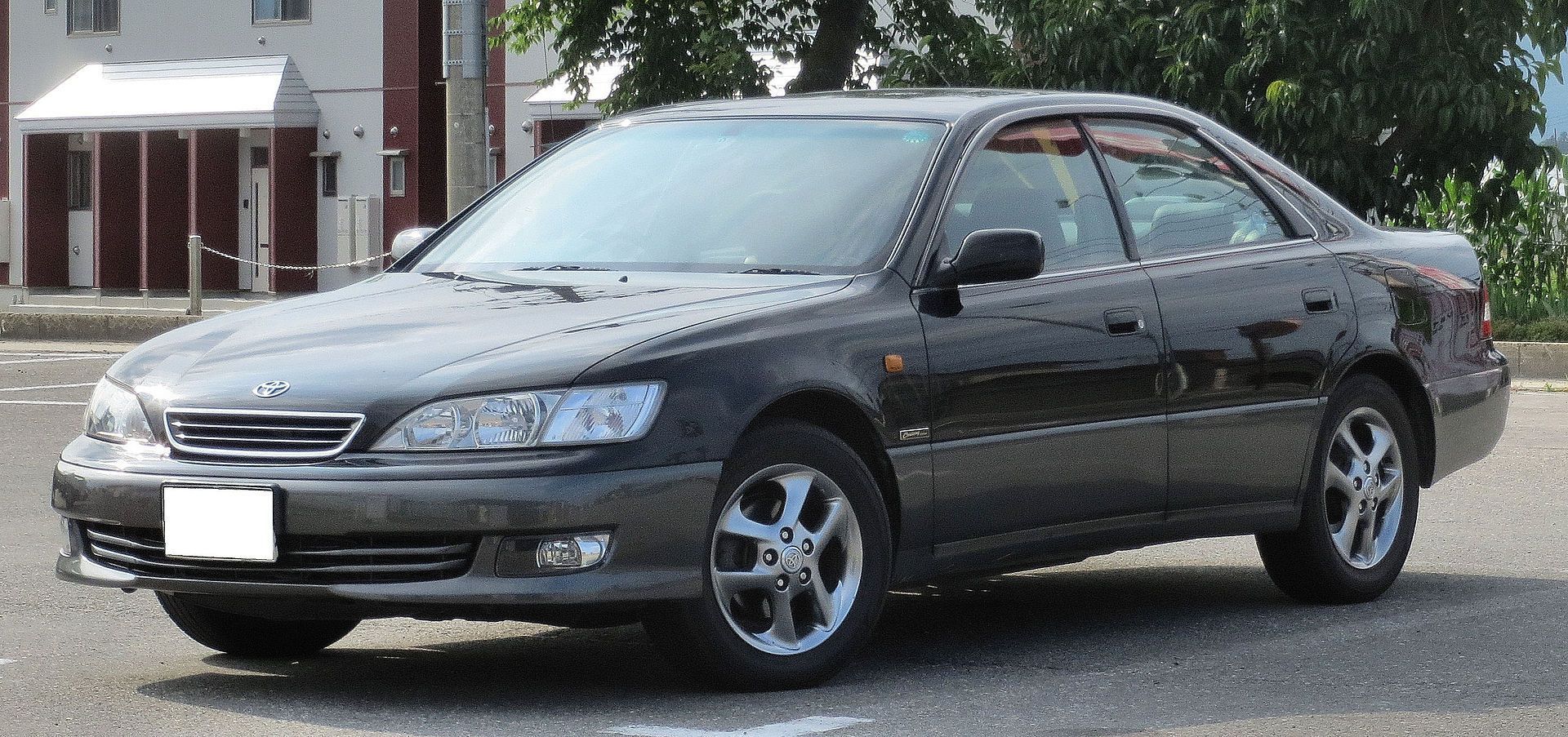
1984-88 Toyota Cressida Sedan Export.
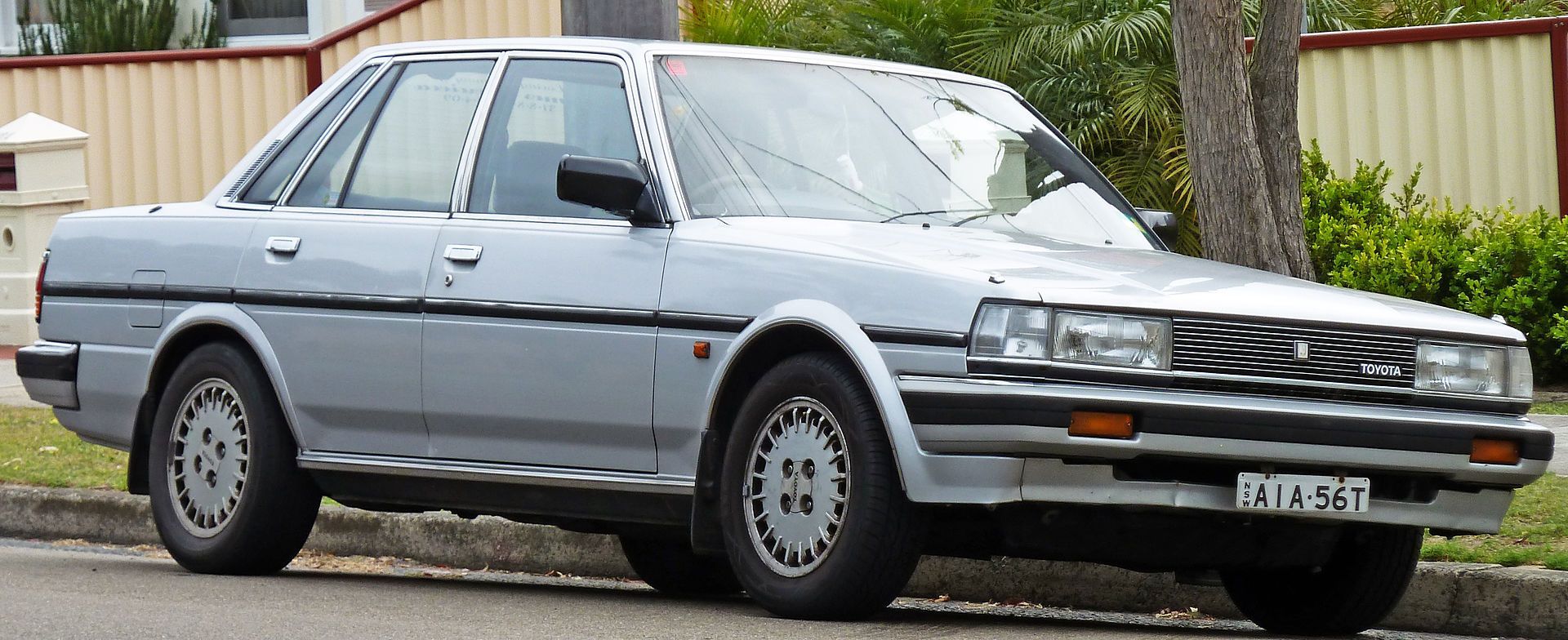
The same vehicle in sporty slightly lowered frameless window hardtop version with sports suspension JDM.
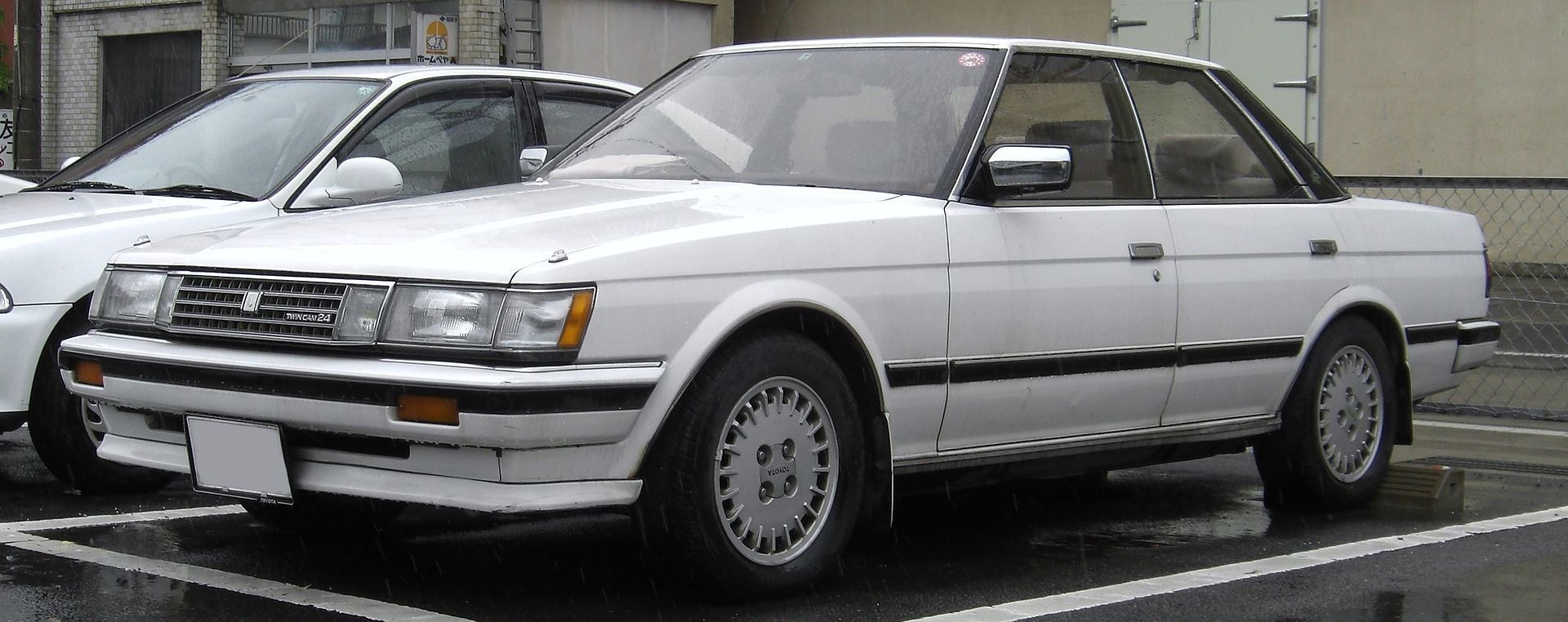
1987-91 Toyota Crown Sedan
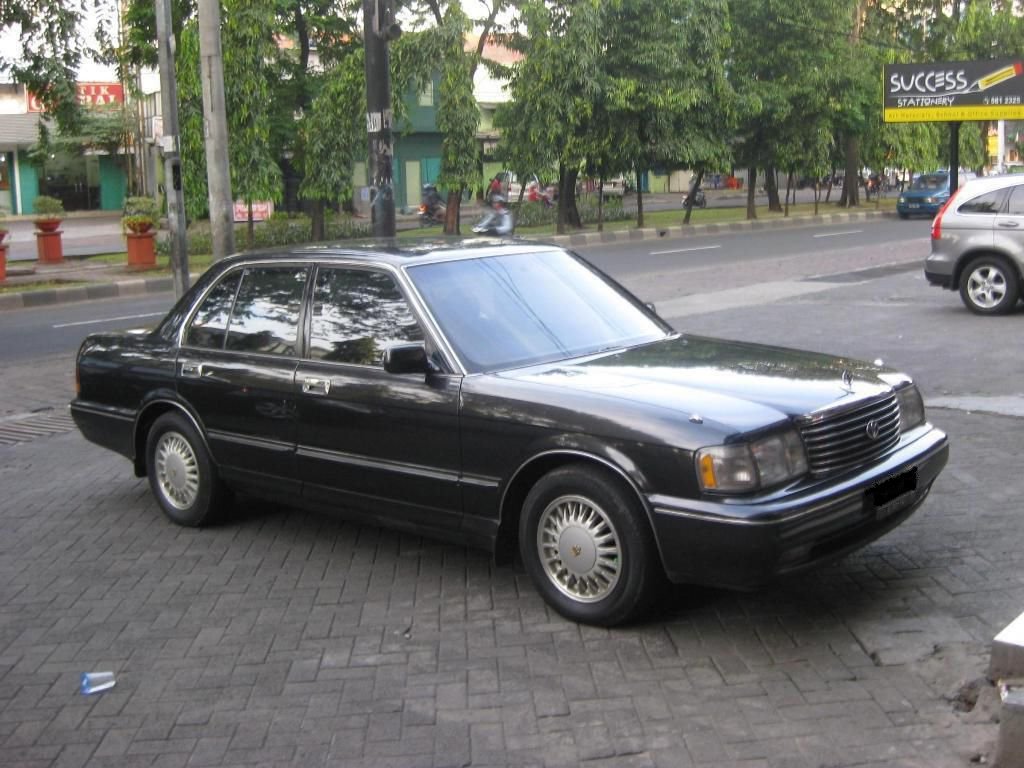
Below is the same vehicle reskinned into a sporty lower roofline Crown Hardtop with heavy duty suspension etc.

Engine-wise, back in the 1980's and 1990's, Toyota Motor Corp had lots of multivalve turbos and twin turbos in 2.0, 2.5 and 3.0 capacities - albeit in FT 4WD too as one of the photos above shows.
It's just the OP bitkahuna and my theory that the present huge variety in body & engine types is significant $$$ drain on Toyota Motor Corp, hence TMC has decided to limit financial losses - hence conservative body derivatives & engine choices, and lots of platform & engine sharing in BRZ/Z4/Mazda RWD for GT86/Supra/Mark Series respectively...
If TMC can introduce solid state batteries next summer, then that's great!
Tesla will surely die next summer then?
Thus, TMC never stayed around till the 2014 season when 1.6L electric turbos were introduced into F1 Racing.
BMW and Subaru were both working on electric turbos not long ago, with patents etc.
However, with Tesla's electric boom, the entire industry seems to be focused on electrification, while traditional fossil fueled internal combustion development has slowed down.
Neither myself, nor the OP bitkahuna believes there will be much in the way of a Lexus V8 TT which would only sell in low volumes.
Why would TMC want to spend big on a low volume V8 TT, when they are already reskinning the Subaru BRZ into Toyota GT86, BMW Z4 into Toyota Supra, and Mazda RWD into Toyota Mark Series JDM?
No one said that ICE development & patents have totally ceased.
I only said that TMC is not interested in pouring huge amounts of $$$ into ICE development; Mr Sulu, you must learn to read more accurately.
I'm sure ICE development & patents is still on-going with V8 TT's and electric turbos, though slowed down dramatically, in lieu of electrification.
I would be surprized, but equally elated - if TMC actually released a V8 TT or electric turbos any time soon...
e-TNGA? It must be the same Toyota CH-R production line & platform if it is to be available in ICE & EV moieties?
As has been said before in Car Chat, the difference in height between the 7th-generation Camry and the 8th-generation Camry is less than 1-inch (1,470 mm (57.9 in) compared to 1,450 mm (56.9 in)), hardly anything significant.
The difference in height between the 4th-generation LS and the 5th-generation LS is less than 0.5-inch (1,466 (57.7 in) compared to 1,461 mm (57.5 in)), hardly anything significant.
The difference in height between the 4th-generation LS and the 5th-generation LS is less than 0.5-inch (1,466 (57.7 in) compared to 1,461 mm (57.5 in)), hardly anything significant.
You will notice that new 5LS, Camry, ES, and Corolla are all at least slightly smaller inside than their predecessors, and this is significant for many people.
The higher the rear seats are mounted, the longer the cabin.

Is it not okay to give my 2 cents on the OP's 2 cents Mr Sulu?
Have you got anything positive to say Sulu?
.
Last edited by peteharvey; 06-24-19 at 05:38 AM.
#29
Thread Starter
Lexus Fanatic
iTrader: (20)
Joined: Feb 2001
Posts: 75,631
Likes: 2,588
From: Present
For example:
In 2007 Toyota sold 2.161 million cars while holding 13.38% market share
In 2009 Toyota sold 1.496 million cars while holding 14.34% market share
In 2018 Toyota sold 2.128 million cars while holding 12.28% market share
Now since 2010, Toyota has been stuck at 12-12.9% market share.
Now contrast all of the above to what Toyota did from 1996-2009, they grew sales and market share every single year. Eventually they doubled it from 7% in 1996, to 13.9% in 2008.
So where is Toyota going in the US market?
In 2007 Toyota sold 2.161 million cars while holding 13.38% market share
In 2009 Toyota sold 1.496 million cars while holding 14.34% market share
In 2018 Toyota sold 2.128 million cars while holding 12.28% market share
Now since 2010, Toyota has been stuck at 12-12.9% market share.
Now contrast all of the above to what Toyota did from 1996-2009, they grew sales and market share every single year. Eventually they doubled it from 7% in 1996, to 13.9% in 2008.
So where is Toyota going in the US market?
Why are you so obsessed with Toyota's cash on hand?
They do not know where the US automotive market is going. Toyota has moved into Chinese manufacturing. And they have stalled on Mexico
#30



